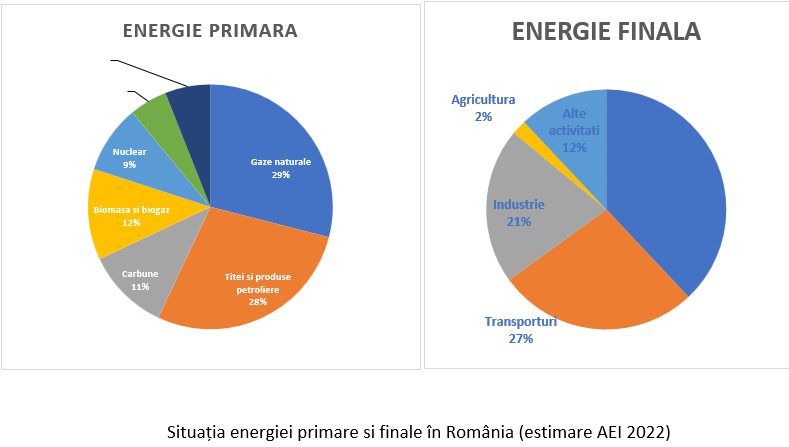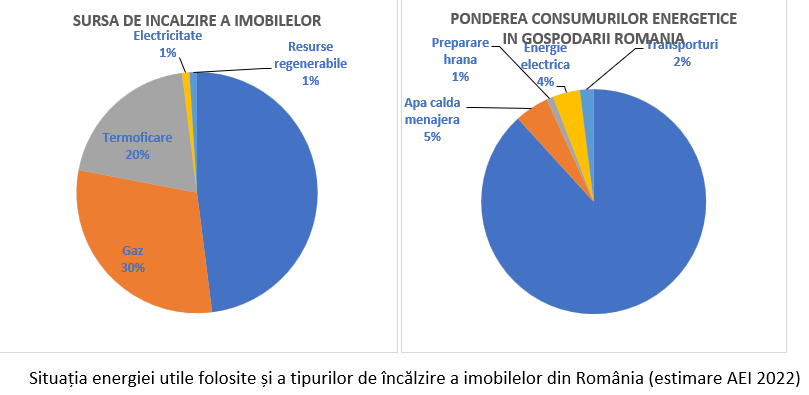
Building heating is a major energy problem in Europe and Romania. Heating represents the largest amount of energy consumed in a building, but also the largest amount of useful energy consumed among all consumption sectors.
In addition, heating causes the highest costs with the highest social impact. Last but not least for heating, obtaining renewable energy is the biggest challenge in the future at the level of Romania and Europe.
In Romania, estimates of primary energy consumption in 2022 show that crude oil, coal and natural gas together account for approximately 68%, which is 7% less than in 2015, while renewable energy shows a 2.4-fold increase over the same period period, but nevertheless this only amounts to approx. 6% of the total primary energy consumption in Romania.

The main consumer of final energy in Romania is the residential sector with approximately 38%, followed by the transport sector with approximately 38%. 27% and industry with about 21%. These industries mainly use energy from non-renewable sources.
Almost half of the useful energy in Romania is used for heating buildings and domestic hot water, the main sources of primary energy are raw wood and natural gas (about 70%).

Building heating is the main energy demand for households (we have not identified information on the energy consumed on average in Romania for cooling, a component that will increase in the future).
Among EU member states, according to Eurostat data, the share of buildings powered by renewable energy sources for heating and cooling was more than half in Iceland (79.4%), Sweden (66.1%), Latvia (57.8% ), Finland (57.5%). and Estonia (52.3%).
Obtaining energy for heating from renewable resources is reduced to a small number of technical solutions: a) at the level of individual houses – “heat pumps, solar thermal panels and photovoltaic panels” or “pellets and photovoltaic panels”, b) urban agglomerations – heating systems, which uses: geothermal energy.
Given the low rate of interchangeability of building heating methods in Romania, the development of fiscal, economic, energy and environmental policies over the last 10 years was needed to strongly stimulate the change of building heating method. Even under these conditions, the probability that we will reach the target of 50% of buildings powered by renewable energy in 2050 is low, especially at the level of urban agglomerations, where natural gas/hydrogen in cogeneration systems and heat agent with SMR are likely to be strategies , which will need to be maintained.
Dumitru Chisalita
head
Source: Hot News
Lori Barajas is an accomplished journalist, known for her insightful and thought-provoking writing on economy. She currently works as a writer at 247 news reel. With a passion for understanding the economy, Lori’s writing delves deep into the financial issues that matter most, providing readers with a unique perspective on current events.